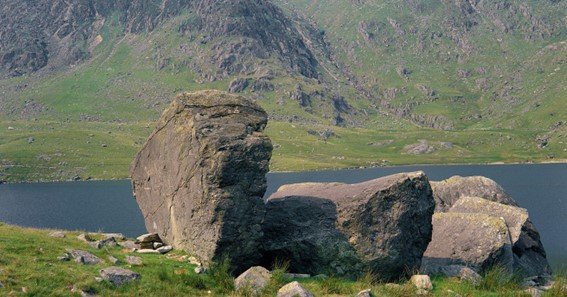What is deposition in science? Deposition is a natural phenomenon whereby sediments are deposited on landforms by wind, water, or other mediums. It generally occurs due to erosion occurring elsewhere. When the water or wind loses its current, it settles down and deposits the previously weathered material.
What Is Deposition In Science?
Deposition is a process in which matter, usually particles of sediments, rocks, or soil, is added to the surface. The particles are often deposited from a fluid as they leave their suspension and settle on the surface.
Deposition can happen through the medium of wind or water, or they can also be transported through other moving solids.
Deposition in one place usually happens due to erosion in another place; in other words, materials are weathered, eroded, or knocked loose and settle somewhere else.
Different sediments settle differently depending on their size and what transports them. In general, fluid speed and sediment size are primary factors. Larger particles will settle out of flowing water at a higher rate than smaller particles.
Role and Impact Of Sediment In Aquatic Environments
One naturally occurring component of aquatic environments is sediment. Sediment is made up of both organic and inorganic materials that have been eroded by water, wind, or ice.
It can be carried by rivers and deposited as sand and silt or be buried and lithified to form sedimentary rocks. Sediment can also be found in streams as bedded sediment. Its presence can have both physical and toxic effects.
Deposition By Wind
The process by which sand grains are gathered and carried by the wind is called “saltation.” When the wind stops or slows down, the sand grains bounce around the ground, depositing the sand and maybe forming dunes.
Deposition By Water
Rock and soil fragments are picked up and carried by flowing water. The particles are released by the water when it slows down, as when it reaches flatter terrain. As it slows down even more, it releases the tiny particles after dropping the larger ones first.
When material carried by a mountain stream rapidly changes from a high to a low gradient, a structure known as an alluvial fan is generally formed. Higher slope angles cause the stream to flow more quickly and can carry heavier silt particles like sand and stones.
When the slope angle is reduced, the stream loses the energy necessary to convey these larger bits of silt, and they become deposited. Eventually, the materials that had been deposited spread out, forming an alluvial fan.
In addition, water may contain dissolved materials, primarily ions containing minerals that the water has dissolved from solid rock. These ions may end up in the ocean and add to its salinity, or they may be deposited on the way to the sea.
Deposition By Sea
In coastal areas, low-energy waves that are unable to sustain their sediment load deposit sediments along or near a coastline. Along the coastline, material brought by the sea is washed up by the water and starts to accumulate, forming beaches and other coastal features like spits and shoals.
Beaches can lose or acquire sand from season to season as a result of the combined effects of tides, waves, and currents. Occasionally, the sand entirely vanishes, revealing heavier cobbles in its place.
Deposition By Ice
Glaciers are dynamic entities that undergo slow movement while sustaining their weight. Their size and shape vary based on the weather. They carry rocks of various sizes and sediments with them as they travel, sculpting the terrain beneath them.
In fact, glaciers can carry the largest of sediments — boulders, which can sometimes reach enormous sizes — for very long distances. The “glacial erratic boulders” that are left behind after glaciers melt and retreat are composed of rock that is unrelated to the local geology in the area where they have settled.
A glacier’s usual deposit is called a “till,” which is made up of all the material the glacier was transporting at the time, including sand, clay, stones, and pebbles. Tills make up the common glacial sedimentary landforms called moraines.
Conclusion
Deposition in science refers to the process where sediments, carried by wind, water, or ice, are laid down in new locations. This natural phenomenon shapes landscapes, forming features like deltas, sand dunes, and alluvial fans.
Understanding deposition helps us comprehend how landforms are created and how different environmental processes interact. It highlights the continuous and dynamic nature of Earth’s surface.
FAQ
What Is Deposition?
Deposition is the process where particles settle and accumulate on a surface after being transported by wind, water, or other forces.
How Does Deposition Differ From Erosion?
Deposition involves the settling of particles, while erosion is the process of particles being worn away and transported.
What Are Common Examples Of Deposition?
Examples include the formation of sedimentary rocks, sand dunes, and frost on surfaces.
How Is Deposition Related To The Water Cycle?
In the water cycle, deposition occurs when water vapor changes directly into ice, forming frost.
Can Deposition Be Harmful?
Yes, the deposition of pollutants, such as acid rain, can harm ecosystems and human health.
Learn more with this detailed article hurawatch-pro










